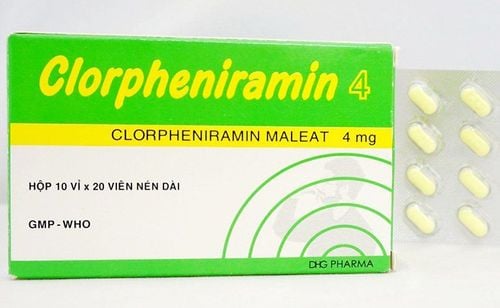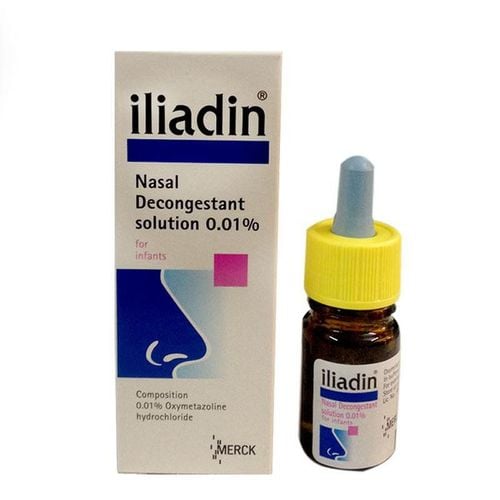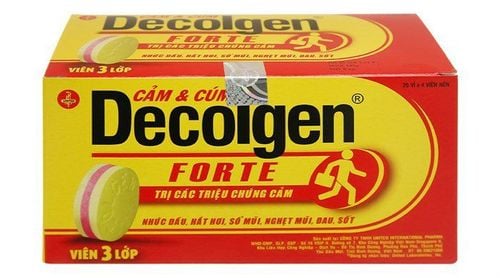For individuals who frequently experience seasonal allergic rhinitis, perennial allergic rhinitis, or chronic idiopathic urticaria, the name Destacure is likely familiar. So, what exactly is Destacure, and how should it be used appropriately? Follow the detailed information in the article below.
1. What is Destacure? Indications for Use
According to the manufacturer, each 5ml of Destacure syrup contains 2.5 mg of the active ingredient Desloratadine along with excipients, including sucrose, sodium benzoate, disodium edetate, bronopol, sorbitol 70% solution, propylene glycol, anhydrous citric acid, Sunset Yellow Supra dye, Ess. Sweet Orange No. 1, aspartame, and purified water.
Destacure is indicated for the following conditions:
- Seasonal Allergic Rhinitis: Destacure is prescribed for rapid relief of symptoms associated with seasonal allergic rhinitis in patients aged 2 years and older.
- Perennial Allergic Rhinitis: It alleviates the ymptoms of perennial allergic rhinitis in patients aged 6 months and older.
- Chronic Idiopathic Urticaria: Destacure helps reduce itching, as well as the number and size of hives, in patients aged 6 months and older suffering from chronic idiopathic urticaria.
2. Precautions When Using Destacure
Destacure's dosage varies depending on the patient's age. It should be measured using a dropper or syringe to ensure the correct amount, typically between 2ml and 2.5ml (half a teaspoon).
- For adults and children over 12 years of age, the recommended dose is 2 teaspoons (5mg in 10ml) once daily.
- Children aged 6–11 years should take 1 teaspoon (2.5mg in 5ml) once daily.
- Children aged 12 months to 5 years should take half a teaspoon (1.25mg in 2.5ml) once daily.
- Infants aged 6–11 months should take 2ml (1.0mg) once daily.
Destacure is contraindicated in patients with hypersensitivity to any component of the medication or to loratadine. If hypersensitivity reactions such as rash, itching, hives, swelling, or difficulty breathing occur, discontinue desloratadine and consider alternative treatments.
In cases of overdose, measures should be taken to eliminate unabsorbed active ingredients from the body. Symptomatic and supportive treatments are recommended.
Clinical trials in adults and adolescents receiving doses up to 45mg of desloratadine (nine times the usual dose) revealed no clinically significant adverse effects.
Desloratadine is not eliminated through hemodialysis, and it is unclear whether it can be removed via peritoneal dialysis.
3. Potential Side Effects of Destacure
Side effects from Destacure are uncommon and vary among individuals. Commonly reported side effects include diarrhea, insomnia, fatigue, dry mouth, and headache. Rarely reported side effects include hallucinations, dizziness, drowsiness, hyperactivity, seizures, tachycardia, palpitations, elevated liver enzymes, increased bilirubin levels, and hepatitis. Inform your doctor if you experience any adverse effects while taking the medication.
4. Interactions with Other Medications
- Cytochrome P450 3A4 inhibitors: Controlled clinical studies have shown that when desloratadine is co-administered with ketoconazole, erythromycin, or azithromycin, plasma concentrations of desloratadine and 3-hydroxy-desloratadine increase. However, no clinically significant interactions were observed.
- Fluoxetine: Studies indicate that co-administration of desloratadine with fluoxetine, a selective serotonin reuptake inhibitor (SSRI), increases plasma concentrations of desloratadine and its metabolite. No significant clinical effects were reported.
- Cimetidine: Studies show increased plasma concentrations of desloratadine when taken with cimetidine, an H2 receptor antagonist. Yet, no clinically significant effects were observed.
5. Additional Pharmacological Information
5.1. Pharmacodynamics
Desloratadine is a selective histamine H1 receptor antagonist with a prolonged, non-sedating effect. After oral administration, desloratadine selectively inhibits peripheral H1 histamine receptors as it does not cross the blood-brain barrier.
In vitro studies show that desloratadine has anti-allergic properties, including the inhibition of pro-inflammatory cytokines (e.g., IL-4, IL-6, IL-8, IL-13) released from mast cells and basophils. It also suppresses the expression of adhesion molecules like P-selectin on endothelial cells. Its clinical significance remains under observation.
5.2. Pharmacokinetics
Desloratadine is detectable in plasma within 30 minutes of oral administration in adults and adolescents. Peak plasma concentrations occur approximately 3 hours post-dose, and the terminal half-life is approximately 27 hours. Desloratadine shows proportional bioavailability with doses ranging from 5 to 20mg.
Approximately 87% of a 14C-labeled dose of desloratadine is equally distributed between urine and feces. Plasma levels of 3-hydroxy-desloratadine show similar Tmax and half-life values as desloratadine.
Destacure is indicated for the treatment of seasonal and perennial allergic rhinitis as well as chronic idiopathic urticaria. Although effective, it may cause some side effects. Patients should carefully read the instructions or consult healthcare professionals to ensure safe and effective use of the medication.
To arrange an appointment, please call HOTLINE or make your reservation directly HERE. You may also download the MyVinmec app to schedule appointments faster and manage your reservations more conveniently.













